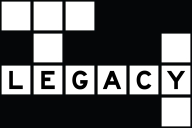You have /5 articles left.
Sign up for a free account or log in.
May 1 is the date -- at almost all competitive-admissions colleges and at many others as well -- when admitted applicants must indicate that they are enrolling if they want their spots saved. At many colleges it's the date on which deposits are due. Many localities have created "College Signing Days," designed to mirror the hype around the signing decisions of star athletes, to celebrate college-going. In Philadelphia last week, celebrities at College Signing Days events included Michelle Obama, Robert De Niro, Bradley Cooper, Rebel Wilson and Zendaya.
And May 1 is also the traditional date at which college presidents could receive a report from their admissions deans on the incoming class and evaluate financial and academic health for the year ahead. For those at the most elite levels, this is the date after which one can issue news releases about admitting classes with simply the best-qualified students of all time.
But just as May Day parades aren't quite what they once were, is it time to consign the idea of May 1 as the crucial day in admissions to the dustbin of history?
Adam Castro, vice president for enrollment management at Bloomfield College, shared this tweet on May 1.
In an interview, Castro described his perspective on May 1 and the summer, and the experience that he and hundreds of admissions professionals share in which the summer is not a period of time off, but of building their fall enrollment class.
He said that Bloomfield is aiming for 500 first-year students to enroll in the fall, and the 300 he has with deposits as of May 1 was typical of the college's experience. Bloomfield, he said, will accept applications as late as August 1 and will admit students until classes start.
"We are working through the summer," he said. (Castro was recently named to a similar position at Mercy College, in New York, and expects a similar pattern there.)
Spending the summer on recruitment, and not just admitting a few students off the waiting list, is logical at places like Bloomfield or Mercy, he said.
At Bloomfield, about 70 percent are eligible for Pell Grants, indicating that they are from low-income families. About half of all students are black and a quarter are Latino -- and many students don't have information about the college process or the money for deposits. Deposit requirements are $150 for commuter students and $250 for residential students, Castro said. Plenty of those who are admitted to and eventually enroll at Bloomfield simply don't have access to that cash, or haven't figured out a way to get the money by May 1.
In fact, one downside to the May 1 hoopla, he said, is that such students think that they are too late. Even though Bloomfield asks admitted applicants to respond by May 1, it has never enforced the deadline. Every year, Castro said, students call on May 2 to ask if they are too late.
Castro said that many assume a college like his is scrambling for new applicants this time of year. In fact, he said half of the 200 who have yet to commit have already applied. They are the ones calling because they can't quite figure out financial aid. That's so common, Castro said, that they college holds back some of its aid budget for those students.
Of the remaining 100 students, many of them will be people who started to apply but never finished the process -- fearing that they wouldn't be admitted or couldn't afford the college.
Some admissions officers responded to his tweet expressing concern about his staff members. Castro said that they do get some time off, and "we dress down in the summer." But this, he said, is when the work he and his colleges do may be most important -- both to the college and the students. "There are students out there who can benefit," he said.
The National Data on May 1
Castro is hardly the only one without a complete class on May 1, although he may be more willing than many to discuss that reality.
Inside Higher Ed's annual survey of admissions directors -- conducted in the summer -- asks whether classes were complete by that date. In 2017, only 34 percent of admissions directors said that they had met their targets by May 1. That figure was down from 37 percent a year before and 42 percent two years before.
The only sector where a majority of colleges and universities reported meeting their goals was public doctoral institutions, of which 59 percent said that they had met their target by May 1. Public research universities include institutions -- such as the University of California, Berkeley, the University of Michigan and the University of Virginia-- that are among the most competitive in admissions in the country. They have a strong base within their states and popularity out of state, including with international students who are increasingly important to the enrollment strategies of many American colleges. For private colleges and universities, 36 percent met admissions goals by May 1.
Colleges With Openings
Yet more evidence that Bloomfield's experience is normal may be found in the annual list released by the National Association for College Admission Counseling of the colleges that still have openings for the fall, many of them with housing and financial aid still available. (The list is primarily of four-year colleges and thus excludes the many community colleges for which May 1 has never been the key date and that are still recruiting for the fall.)
There are 422 institutions on the list, up slightly from last year and substantially from several years before. But NACAC cautions that the list is more of a bulletin board than a true survey, as some colleges opt in some years and not others. Some colleges only join the list a bit after May 1. And while the list is not a scientific survey, it does show that there are many college still seeking students this year, and the number appears to be going up.
Consider the data below from NACAC.
Colleges in NACAC Report on Institutions With Available Slots for the Fall
| Number of Colleges as of May | Final Number Participating | |
| 2012 | 375 | 445 |
| 2013 | 210 | 305 |
| 2014 | 257 | 480 |
| 2015 | 225 | 365 |
| 2016 | 344 | 464 |
| 2017 | 414 | 569 |
| 2018 | 422 | n/a |
Some colleges on the list don't like that generally known (even if they welcome counselors knowing so they can steer potential students their way).
But Castro, not surprisingly, has no problem with his college being on the list.








